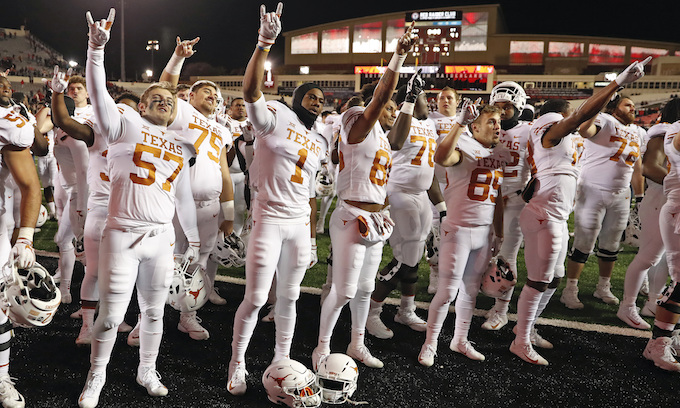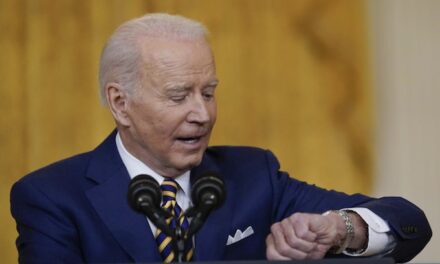AUSTIN, TX – Before they will participate in recruiting or alumni events, players on the University of Texas Longhorn football team want their school to retire their fight song, “The Eyes of Texas.”
The song, apparently, is racist.
According to the UT school newspaper, The Daily Texan, in April 2018, “The University of Texas, at least originally, had very clear minstrel connections,” vice provost for diversity Ted Gordon said. “(‘The Eyes of Texas’) was first sung and played at a minstrel show which featured performers in black face.”
He further charged that the fight song was adopted in 1903, a period of time when lynchings were frequent and African-Americans in Texas lived under Jim Crow laws.
“This is definitely about minstrelsy and past racism,” Gordon told the Daily Texan in 2018. “It’s also definitely about school pride. One question is whether it can be both those things or whether it can be one or the other.”
The football players have more demands, including that the school administration rename four buildings, Robert Lee Moore Hall, Painter Hall, Littlefield Hall, and James Hogg Auditorium.
Hogg, a former governor of Texas, was too young to serve in the Civil War, but his father died as a Confederate general during that war. Governor Hogg was an outspoken follower of the New South Creed, a populist southerner movement in the late 19th century. The New South Creed aimed to eliminate the attitudes of the pre-Civil War antebellum South. However, his sin was that while he pushed for anti-lynching legislation, he also supported a movement to segregate railroad passenger cars in Texas.
Robert Lee Moore Hall, built in 1972, is the tallest building on the UT campus. Named for a UT mathematics professor, Robert Lee Moore (1882-1974), history reveals he was against desegregation and refused to admit African-American students into his classroom after UT was desegregated.
T.S. Painter (1889-1969) was a zoologist whose most famous work was in the study of chromosomes. He was president of UT when an African-American man named Heman Marion Sweatt applied for entrance to the university. He was denied admission because of his race. Painter was sued, along with the university, in 1950. Sweatt v. Painter became the precursor to Brown v. Board of Education of Topeka, Kansas that led to desegregation of all U.S. public schools.
Littlefield Hall is named after Alice Littlefield (1846-1935), wife of Texas businessman and philanthropist George W. Littlefield. Husband George held the rank of major in the Confederate States Army and suffered an injury in battle. The town of Littlefield is named after George and the Sons of Confederate Veterans named their Austin camp after him. The SCV attempted to sue UT in 2015 for secretly removing Confederate statues from campus. George Littlefield had commissioned the statue of Robert E. Lee that formerly was on display on campus.
The football players also demand 0.5 percent of annual earnings from UT athletics programs be donated to the Black Lives Matter movement’s organizations, the Darrell K. Royal Stadium be co-named after the first black UT football player named Julius Whittier, and that a permanent black history exhibit be added to the UT athletics Hall of Fame.
The football players stated on Twitter that while the UT administrators decide to meet their demands or not that they will continue to practice and workout.
UT Athletics Director Chris Del Conte responded within an hour of the players’ demands being posted on Twitter.
“I am always willing to have meaningful conversations regarding any concerns our student-athletes have. We will do the same in this situation and look forward to having those discussions,” he tweeted back.
© Copyright © 2020 Hyde Interactive (San Angelo LIVE!), All rights reserved.
—-
This content is published through a licensing agreement with Acquire Media using its NewsEdge technology.



















To these woke negroes everything is racist.
This currant Democrat Party has put Blacks, Black females and especially Black LGBTQ females on thrones.
This Democrat Party has put race, feelings, and every form of sexual perversions in front of and on top of everything else in our country.
If you are White, you are responsible for every thing that Blacks do……. But – I.A.W. U.S. Census & FBI (Table 43a)
Black males make up about 7% of the U.S. population but every year commit ~56% of all the murders and ~64% of all robberies in the U.S… Every year in the U.S. there are ~6,000 African-Americans men, women and children killed and 92% of them were killed by fellow African-Americans.
Where is the outrage from “Black Lives Matter” and prominent members of the African-American community? Where are the words of condemnation and sorrow from “Black Lives Matter”, Obama, Al Sharpton, or Jesse Jackson over the fact that members of their own race are summarily executing each other?
How many bodies do you have to step over to get to the one that you think is important only because a White police officer was involved?